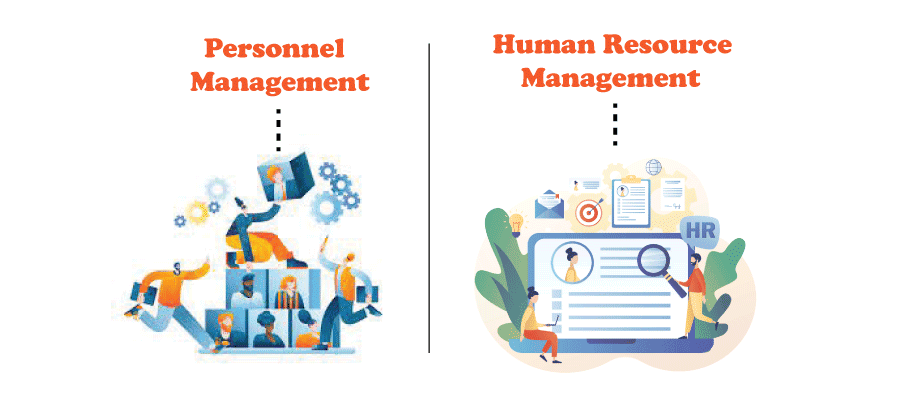In the dynamic realm of organizational management, understanding the nuances between Personnel Management and Human Resource Management (HRM) is crucial. This article aims to dissect and illuminate the key disparities between these two pivotal facets of workforce administration.
The Evolution of Personnel Management
Defining Personnel Management
Personnel Management, historically rooted, encapsulates traditional practices related to workforce administration. It primarily focuses on routine tasks such as recruitment, payroll, and employee relations. The approach is transactional, emphasizing adherence to rules and regulations.
Personnel Management in Practice
In practical terms, personnel managers traditionally handled administrative functions, ensuring that organizational processes adhered to established norms. Their role was often confined to the execution of routine tasks, minimizing strategic involvement in organizational development.
The Emergence of Human Resource Management
Embracing a Strategic Paradigm
Human Resource Management, on the other hand, signifies a paradigm shift. It transcends the transactional nature of personnel management, adopting a strategic outlook. HRM integrates with organizational objectives, placing a premium on the holistic development of human capital.
HRM in Action
In practice, HRM extends beyond the administrative scope. It actively engages in strategic planning, talent management, and employee development initiatives. This transformative approach positions human resources as a critical component in driving organizational success.
Key Differentiators
Focus on Personnel vs. Holistic Human Capital Management
The primary distinction lies in the scope of management. While personnel management centers around individual employees, HRM broadens the perspective to encompass the entire workforce as a valuable asset contributing to organizational goals.
Reactive Measures vs. Proactive Strategies
Personnel management often involves reactive measures, responding to immediate workforce needs. In contrast, HRM adopts proactive strategies, anticipating and addressing long-term objectives, fostering a more sustainable and resilient organizational culture.
Compliance vs. Employee Development
Personnel management tends to be compliance-oriented, ensuring adherence to rules and regulations. In contrast, HRM prioritizes employee development, aiming to create an environment conducive to continuous learning and growth.
Bridging the Gap: Integrating Personnel Management and HRM
Recognizing the evolution from personnel management to HRM doesn’t negate the importance of both approaches. A harmonious integration, leveraging the strengths of each, is key to comprehensive workforce management.
Synergies in Practice
Efficient integration involves aligning administrative efficiency from personnel management with the strategic foresight of HRM. This synergy ensures a cohesive approach that balances immediate operational needs with long-term organizational goals.
The Road Ahead: Navigating the Complexities
As organizations evolve, so too must their approaches to workforce management. Recognizing the difference between personnel management and HRM is pivotal for cultivating a resilient, adaptable, and thriving organizational culture.
Conclusion: Shaping the Future of Workforce Management
In conclusion, understanding the distinctions between personnel management and HRM is imperative for organizations striving to excel in the contemporary business landscape. The evolution from transactional personnel management to strategic HRM signifies a paradigm shift that acknowledges the pivotal role of human capital in organizational success.







